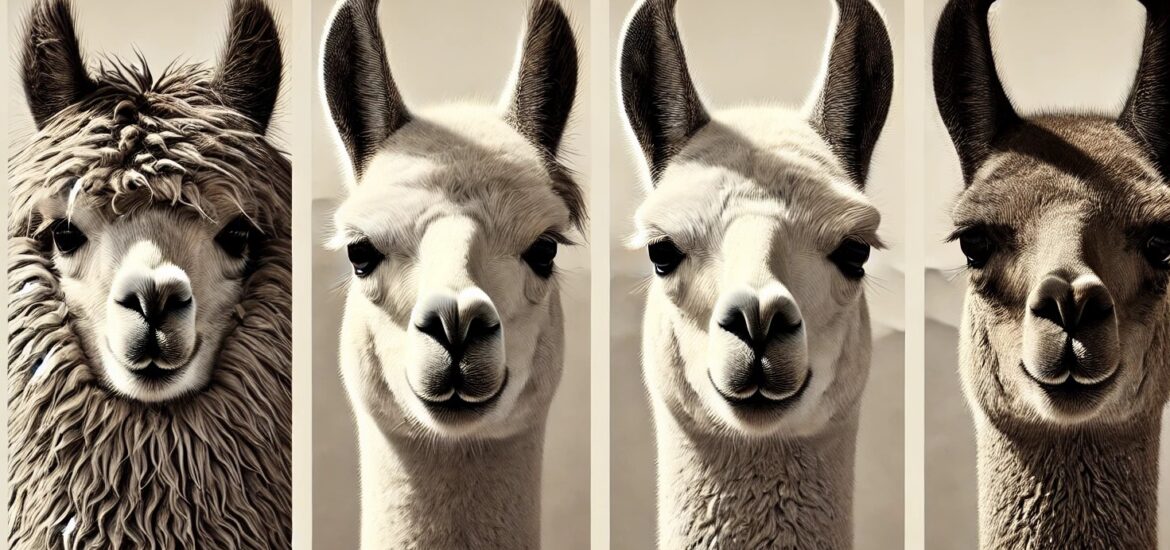For centuries, fluffy and friendly creatures have roamed the Andes of South America. Nowhere in the highlands can you find more of them than in Peru. Our country is home to four unique species of camelids, each with its own charm.
In Peru we highly value these animals, for example, the vicuna, is featured on Peru’s national emblem, symbolizing the country’s rich wildlife. Before visiting Peru, learn more about these fascinating animals and discover their importance to our culture and history!
Peruvian Camelids
Alpaca
The first furry friend on our list is the alpaca, which has been cherished by Andean people for almost 6,000 years. You can identify these lovely animals by their petite bodies, long necks, and thick, fluffy coats. Alpacas, like vicuñas, often weigh 60 kg and stand 90 cm tall.
There are two main types: the wakaya, which has a curly and dense fleece, and the Suri, known for its longer, silky coat that many people admire. People worldwide love Alpaca wool for its softness, warmth, and lightness. It comes in many beautiful natural colors, including white, black, and beige.
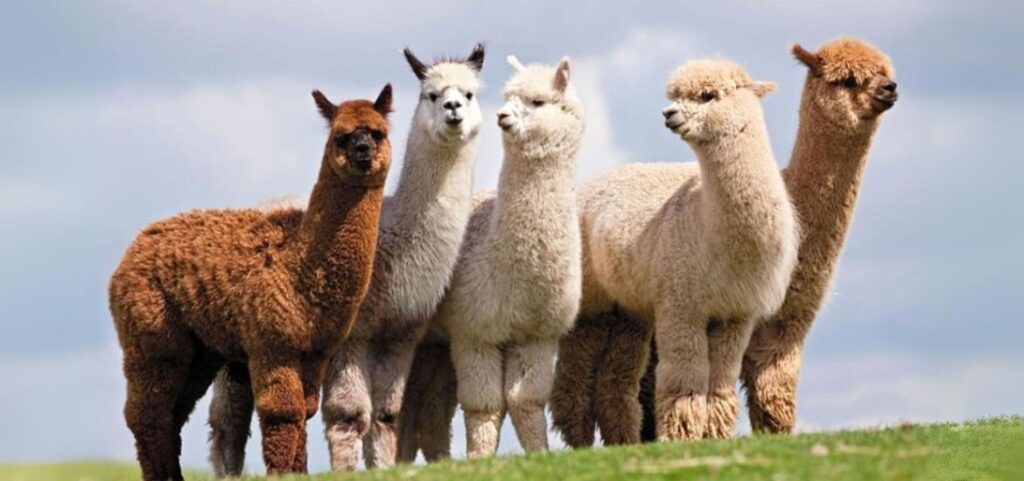
Peru takes pride in being the world’s top exporter of alpaca fiber, making it an important resource for highland communities. Additionally, alpaca meat is gaining popularity in modern Andean cuisine because it is rich in protein and low in fat.
Besides their wool and meat, alpacas have a unique place in Peruvian culture. In Inca times, only the elite used their fiber, showing people’s high regard for these animals. Today, alpacas are a beloved element of the Andean scenery, providing joy to many.
Llama
The llama has been a domesticated animal for over 6,000 years. This South American camelid, derived from the wild guanaco, inhabits nearly every Andean country on the continent. With a great difference, they are the sturdiest camelids of all, as they weigh between 130 and 150 kilograms and can stand as tall as 1.90 meters.
People appreciate Llamas for their strength and ability to carry loads of up to 34 kilograms, making them excellent pack animals for long journeys. They mostly eat green grass and “ichu”, a Peruvian feathergrass that grows in high altitudes.
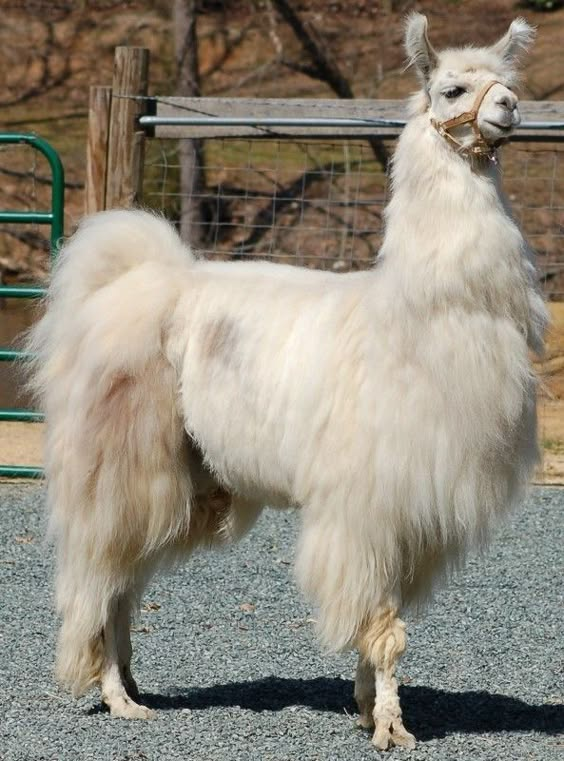
Interestingly, they can go without much water, much like their relatives, the camels. Throughout history, the Inca culture valued llamas for their wool, meat, and transportation. They even used them in religious ceremonies to honor Inti, the sun god at the Inti Raymi ceremony.
Today, llamas continue to be an important part of life in the Andes, especially in beautiful areas like Cusco and the Sacred Valley, enriching local traditions and livelihoods.
Vicuña
This wild camelid is fascinating. It is closely related to the alpaca and is the smallest of the Andean camelids. Vicuñas can grow up to 160 cm tall and weigh as much as 50 kg. They typically live over 3,200 meters above sea level, and you can find them in the high-altitude Andes regions. Their elegant coats, which come in beige or brown hues and feature a gorgeous white breast, and their thin legs help you to identify them.
For a long time, people have admired vicuña fiber as one of the finest in the world. In pre-inca times, indigenous communities carefully collected this luxurious wool without harming the animals. Unfortunately, after the Spanish conquest in the 16th century, hunting put the vicuña population at risk.
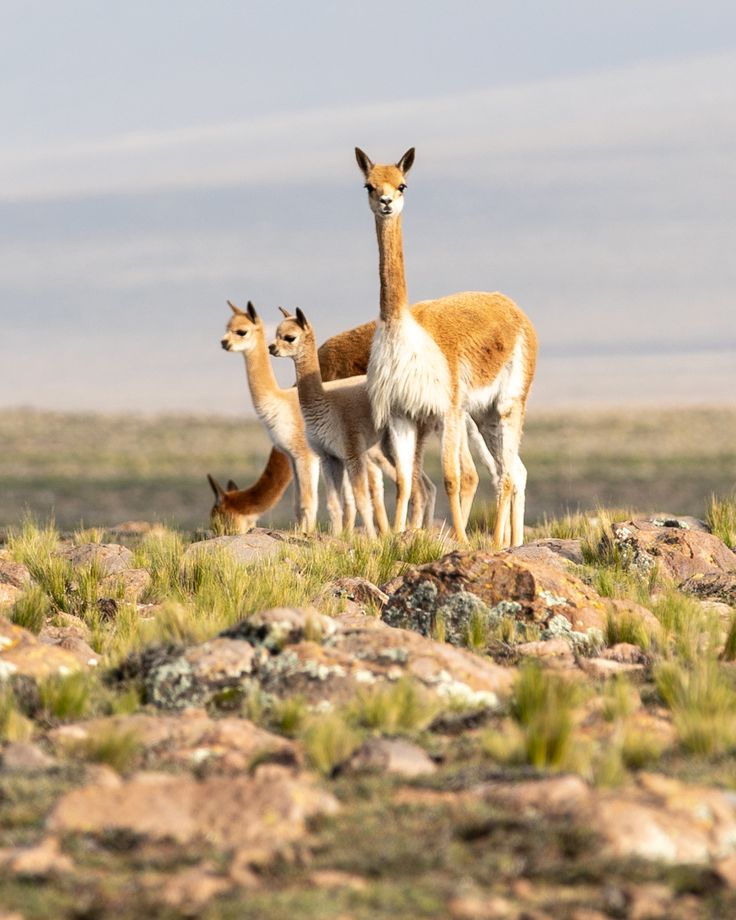
Thankfully, today we estimate that more than 200,000 vicuñas live in the Andean regions of Peru, Bolivia, Argentina, Chile, and Ecuador, thanks to ongoing conservation efforts. As they are now legally protected, vicuñas are considered to have high-quality fiber that may cost up to $3,000 per yard.
The Peruvian government manages the sustainable collection of vicuña wool through an annual ceremony called Chaku, ensuring the safety of these animals as they return to the wild after they are sheared. The vicuña is not only a cherished symbol of Andean culture but also plays an important role in the local economy, with many rural communities benefiting from the profits.
Guanaco
The guanaco is the last camelid on our list, with a small population of about 3,500. While they are more common in Argentina and Chile. These animals stand up to 120 cm tall at the shoulder and typically weigh around 90 kg
Their reddish-brown fur and white underbelly make them easy to spot. Although their wool is not as fine as some others, people value it for its softness, coming in just behind the vicuña. Guanacos are remarkable for their adaptability.
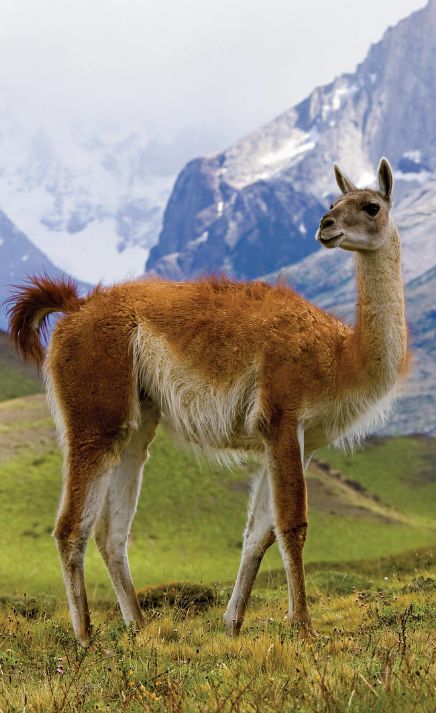
They can thrive at sea level as well as at high altitudes over 4,000 meters. Living in groups helps them stay safe, and when they feel threatened, they can run fast—up to 56 km/h, playing an important role in the ecosystems of South America. However, their numbers have decreased due to hunting. We must work together to protect these wonderful animals and their habitats.
Differences
Many people mix up Llamas and alpacas, but they have some fun differences that can help you tell them apart! One easy way to spot them is by looking at their ears. Llamas have long, banana-shaped ears, while alpacas have shorter, pointy ears.
When it comes to size, llamas are the bigger ones, weighing between 90 to 158 kg. Alpacas are lighter, usually up to 55 kg. Llamas also stand taller, reaching about 42-46 inches at the shoulder, while alpacas are shorter, around 34-36 inches.
Their fur is another way to tell them apart! Llamas have a coarser outer layer with a softer undercoat, while alpacas are known for their soft and dense wool. In terms of personality, llamas tend to be more independent and often take on a protective role with other animals.
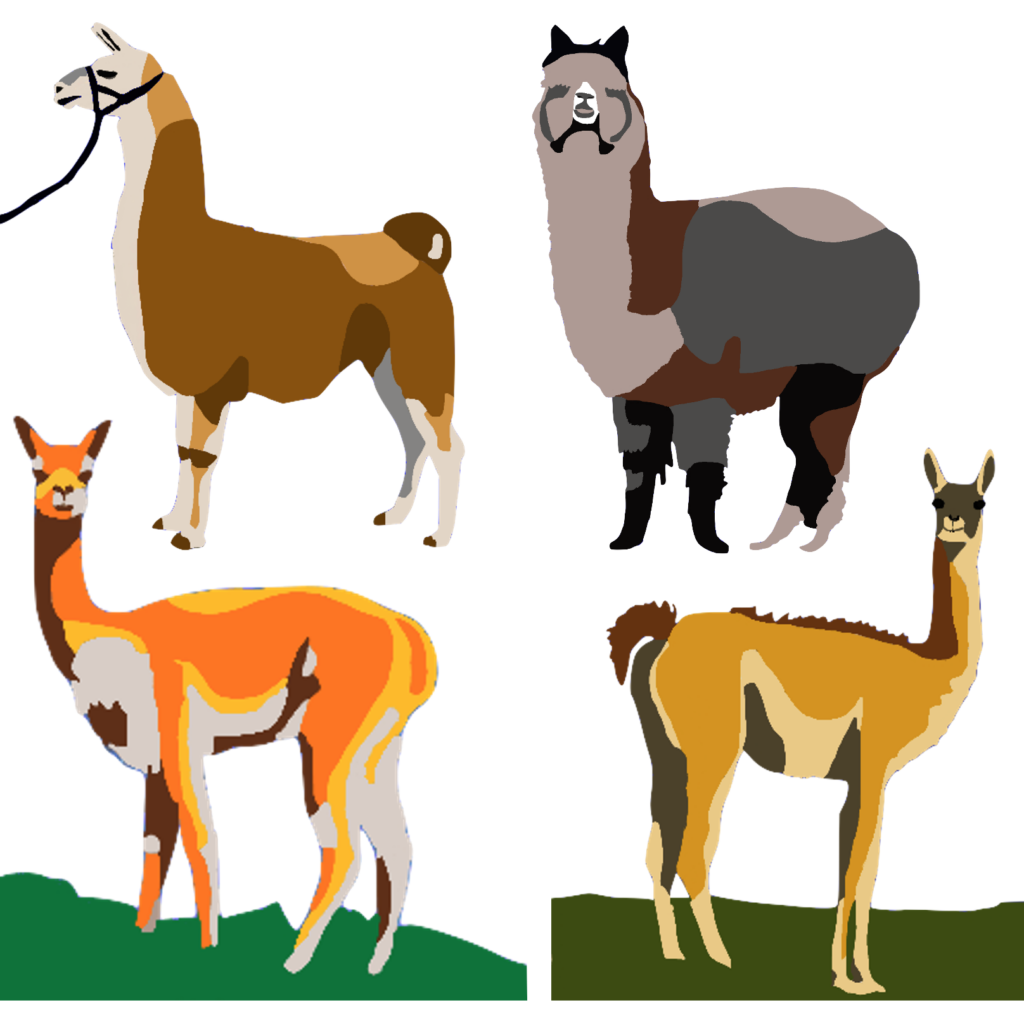
Alpacas, on the other hand, are a bit more nervous and enjoy staying close to their herd. Both animals can spit, but llamas do it more often if they feel threatened. Regarding vicuñas and guanacos,vicuñas resemble small, slender deer.
Their soft fur yields the world’s most coveted fiber, about a pound per year. Once hunted for this wool during the Spanish conquest, vicuñas are now protected. Guanacos are smaller than llamas, weighing around 90 kg, they have a brown back and gray belly and face. Unlike vicuñas, guanacos lack the same demand for their fur.
Besides, Peru, you can find Guanacos in Patagonia, Ecuador, Colombia, and Chile. In conclusion, Llamas are the largest, followed by guanacos, alpacas, and vicuñas. Alpacas have more uniform colors, while llamas showcase a wider variety.
Peruvian Camelids and Fashion
The alpaca wool trade has been a vital source of income for communities in the Andes for many years, and it’s wonderful to see Peru shine as the largest producer in the world. Alpaca and Vicuña wool draws people for its softness, warmth, and lightness, making it a popular choice in international markets.
For example, the Huacaya alpaca wool is known for its fluffy fibers that are perfect for cozy clothing, and Suri is celebrated for its silky texture. Sustainability plays a key role in alpaca wool production. The wool of vicuña or alpaca comes in beautiful natural colors, reducing the need for chemical dyes.

The top grade, Baby Alpaca, is especially loved for its incredible softness and is often chosen for luxury fashion items. This means we can enjoy high-quality textiles while also supporting eco-friendly practices. On the other side, the vicuña wool is one of the world’s finest, a yard may reach thousands of dollars, exporting this valuable wool to Europe, or the United States.
If you want to see these furry creatures for yourself you must visit Peru, where you’ll spot thousands of them. Be gentle when you meet them, so they’ll reply to your kindness. They’re friendly with kids too!
We encourage you to explore Peru with the assistance of Viagens Machu Picchu. We operate around Peru and Bolivia, and our customers can guarantee our excellent service! Contact us to start planning an adventure of a lifetime trip!
Viagens Machu Picchu, journeys that inspire, moments that last.

